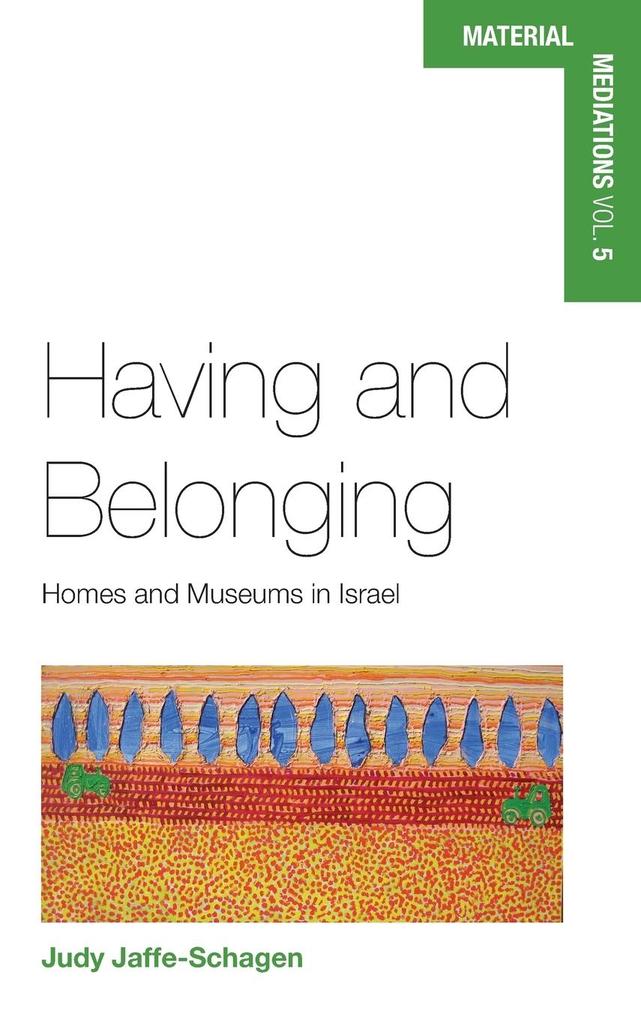
Zustellung: Do, 12.06. - Mo, 16.06.
Versand in 1-2 Wochen
VersandkostenfreiBestellen & in Filiale abholen:
The home and the museum are typically understood as divergent, even oppositional, social realms: whereas one evokes privacy and familial intimacy, the other is conceived of as a public institution oriented around various forms of civic identity. This meticulous, insightful book draws striking connections between both spheres, which play similar roles by housing objects and generating social narratives. Through fascinating explorations of the museums and domestic spaces of eight representative Israeli communities-Chabad, Moroccan, Iraqi, Ethiopian, Russian, Religious-Zionist, Christian Arab, and Muslim Arab-it gives a powerful account of museums' role in state formation, proposing a new approach to collecting and categorizing particularly well-suited to societies in conflict.
Inhaltsverzeichnis
A Note about the Cover
Illustrations
Preface: Switzerland?
Acknowledgments
Introduction
Chapter 1. Establishing collections, building a nation
Chapter 2. Exhibiting belief: religious objects in a secular institute
Mrs Marantz and the Israel Museum
Chapter 3. More than one story to tell
Mrs Sapir-Bergstein and Beit Hatfutsot, the Museum of the Jewish People
Chapter 4. A migration museum and its visitors
Mrs Kaduri and the Babylonian Jewry Heritage Center
Immigrants and their museum
Chapter 5. Indigenous curation provides a second glance
Mr Yeshayahu and Bahalachin, the Ethiopian Jews Cultural Center
Chapter 6. Medals rather than high art
Mr Pens and the Museum of the Jewish Soldier in World War II
Chapter 7. On colors and borders
Mrs Romem and People of Israel website
Chapter 8. A holiday as object
Mrs Salameh and Beit HaGefen
Chapter 9. The geographical position of art and home
Mrs Abu Ilaw and the Umm el Fahem art gallery
Intermezzo
Chapter 10. Belonging: Mechanisms of inclusion and exclusion
To Conclude: Switzerland once more
Notes
Bibliography
Index
Illustrations
Preface: Switzerland?
Acknowledgments
Introduction
Chapter 1. Establishing collections, building a nation
Chapter 2. Exhibiting belief: religious objects in a secular institute
Mrs Marantz and the Israel Museum
Chapter 3. More than one story to tell
Mrs Sapir-Bergstein and Beit Hatfutsot, the Museum of the Jewish People
Chapter 4. A migration museum and its visitors
Mrs Kaduri and the Babylonian Jewry Heritage Center
Immigrants and their museum
Chapter 5. Indigenous curation provides a second glance
Mr Yeshayahu and Bahalachin, the Ethiopian Jews Cultural Center
Chapter 6. Medals rather than high art
Mr Pens and the Museum of the Jewish Soldier in World War II
Chapter 7. On colors and borders
Mrs Romem and People of Israel website
Chapter 8. A holiday as object
Mrs Salameh and Beit HaGefen
Chapter 9. The geographical position of art and home
Mrs Abu Ilaw and the Umm el Fahem art gallery
Intermezzo
Chapter 10. Belonging: Mechanisms of inclusion and exclusion
To Conclude: Switzerland once more
Notes
Bibliography
Index
Mehr aus dieser Reihe
Produktdetails
Erscheinungsdatum
01. April 2016
Sprache
englisch
Seitenanzahl
234
Reihe
Material Mediations: People and Things in a World of Movement, 5
Autor/Autorin
Judy Jaffe-Schagen
Verlag/Hersteller
Produktart
gebunden
Gewicht
496 g
Größe (L/B/H)
235/157/17 mm
ISBN
9781785331343
Entdecken Sie mehr
Bewertungen
0 Bewertungen
Es wurden noch keine Bewertungen abgegeben. Schreiben Sie die erste Bewertung zu "Having and Belonging" und helfen Sie damit anderen bei der Kaufentscheidung.



















